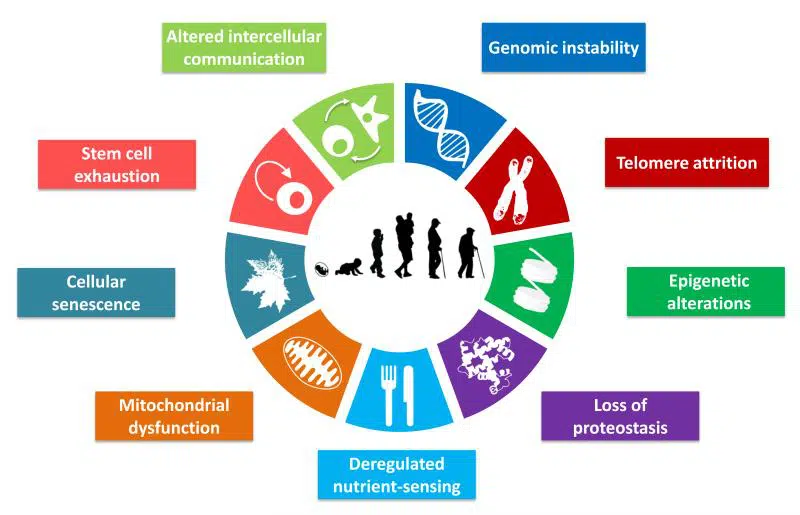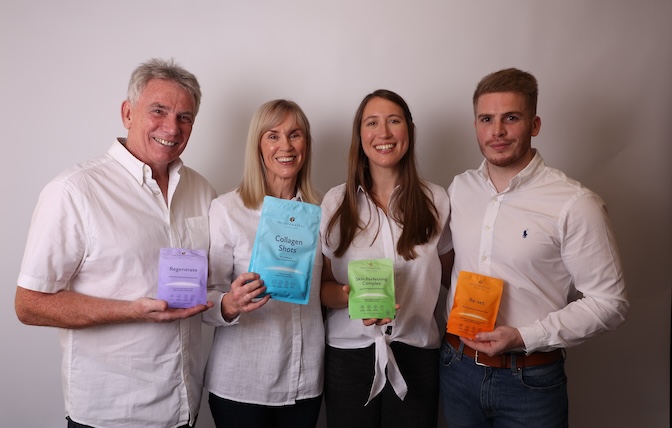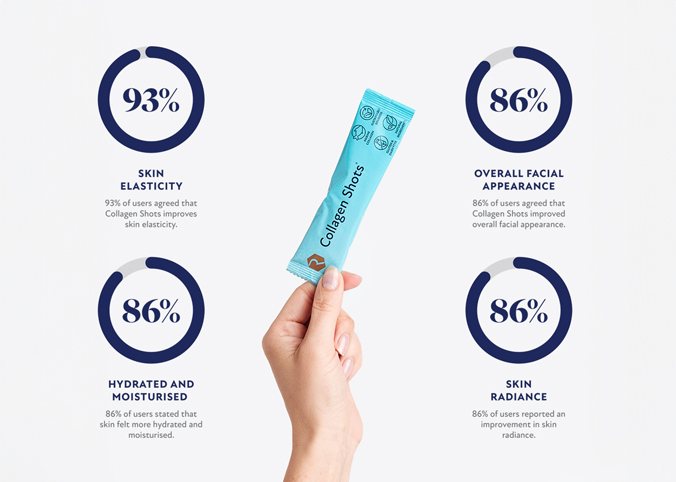The 9 indicators of ageing and how Regenerate can reduce their impact?

Scientists have found 9 key indicators of ageing. Regenerate by Rejuvenated has been formulated to reduce the impact of the 9 indicators of ageing. Read on to discover more.
Do you want to live to being 100, 120 or even 150? Is it possible?
‘Address one. and you can slow down ageing. Address all of them, and you might not age.’ David Sinclair, Harvard medical School Scientist on the indicators of ageing.
The science of ageing is taking centre stage but as we look for the holy grail; we realise that living to such an extraordinary number of years can mean living with pain and debilitating diseases. To live longer and healthier, it is important to understand the markers of ageing. These are the pointers that we took into consideration when we created our youth boosting capsule, Regenerate.
The Rejuvenated range and Youth Plan program have been formulated to help to protect cells and enable you to have more energy and vitality to give you the advantage in staying youthful. Here we discuss the indicators of ageing and how Regenerate, our new hero product, has been formulated to help combat several of them.
As teens we yearn for the passage into adulthood, but it isn’t long before we are aware of the gradual process of ageing and see the signs of deterioration. Ageing isn’t caused by one factor, but it encompasses multiple processes that the human body goes through.
Recent advances in science have enabled us to live longer but how can we live these extended years without the diseases associated with passing years.
Scientists are working to discover what is happening at a molecular and cellular level to combat the signs of old age and have summarised what they consider to being 9 key indicators of the ageing processes.
What are the indicators of ageing?
- Gene instability caused by DNA damage
- The wearing of the protective caps (telomeres) at the end of chromosomes
- Failing of the epigenome that controls which genes are turned on and off
- Loss of healthy protein maintenance
- The inability to absorb nutrients
- Mitochondrial dysfunction
- Cellular senescence (the death of cells)
- Stem cell exhaustion
- Altered intracellular communication

Diagram showing the 9 indicators of ageing, courtesy of the Hallmarks of Aging
The 9 indicators of ageing
Genomic instability
One contributing factor is the damage to our DNA throughout life. DNA is constantly under attack from internal and external damage and although our DNA is encoded to repair itself, this integrity gradually fails over time.
Telomere attrition
Telomeres are the protective caps at the end of each chromosome. They act in a similar way to the plastic caps at the end of a shoelace and protect the unravelling of the chromosome. Each time our cells duplicate the telomeres get shorter thus accelerating the ageing process. There is only a finite number of times that this can occur. The discovery of telomeres has led to scientists to studying how the life of telomeres may be extended and the discovery of the difference between chronological and biological ageing.
Studies on astragalus, a key herb in Regenerate contains compounds that activate the telomeres enzyme.
Epigenetic alterations
Epigenetics affect how genes are read by cells and whether the cells should produce relevant proteins.
Epigenetics control our genes, they determine whether a cell should become a skin cell, blood cell, hair cell, liver cell etc.
For instance, the COL1A1 gene is in all types of cells but in skin cells it is expressed to produce Type 1 collagen proteins. As the different combinations of genes are turned on or off our epigenetics makes us unique. In disease our various genes are switched into an opposite state, away from being healthy. Our DNA and epigenetics are intertwined and play a vital part in the indicators of ageing.
Loss of proteostatis
Proteostasis means a state of balance of proteins. Proteins perform essential jobs within our cells, they act as gate keepers in the cellular wall and also work as enzymes for key chemical reactions in the body. An imbalance in proteins can create folds within the network and disrupt balance. Oxidative stress and the balance in free radicals and antioxidants being out of sync can have an impact on proteostatis.
Deregulated nutrient sensing
The food we eat supplies nutrients to our body, however as we only eat periodically the nutrient levels fluctuate throughout the day. Sensors in our cells take in just the right amount of nutrients into our cells but over time oxidative stress impacts the sensors ability to respond to the variations in nutrient levels.
Mitochondrial dysfunction
The mitochondria are the energy plant of the cell, a bit like a battery. They produce around 90% of the chemical energy that cells need to survive. But this energy comes at a cost as the mitochondria create most of the cell’s free radicals. These free radicals damage the efficiency of the mitochondria which have to work harder and in turn create more free radicals. A reduction of mitochondrial function can lead to fatigue and ageing. This is further impacted as NAD+ (an important molecule) levels start to decline. Vigorous exercise or supplementing with an NAD+ boosting supplement can promote mitochondrial biogenesis to more youthful levels. Regenerate contains a special molecule Nicotinomide mononucleotide which works to boost NAD+ levels to support the mitochondria.
Cellular senescence
Cellular senescence occurs when a cell has lost the ability to divide. This is a natural process, and the body can typically create enough new cells to counteract the ones that are no longer able to function. As we age the number of senescent cells increases and without enough new cells this becomes problematic. Certain foods and supplements contain senlolytic compounds which help to remove senescent cells from our body. Regenerate contains a number of these ingredients to help cells and the body to stay youthful.
Stem cell exhaustion
The epigenome is responsible for determining the role of our individual cells. However, stem cells don’t have a specialised role, they can assign themselves to be a specific cell. These cells are invaluable for tissue homeostasis and regeneration. When stem cell exhaustion occurs retiring cells may not be replaced quickly enough which leads to an increase of senescent cells caused by DNA damage. There is still much work to be carried out on stem cells and their role in ageing.
Altered intercellular communication
Cells use an intricate network of chemical signalling molecules to communicate with each other. They use this network to adapt to changes. However, over the years the networks start to break down and cells lose their ability to communicate. Inflammation is the body’s response to remove damaged cells, but it can also trigger damage to other nearby healthy cells causing them to become senescent.
How Regenerate can help you to slow down the indicators of ageing.
Regenerate combination of 8 youth boosting molecules helps to promote NAD+ to youthful levels to promote mitochondria and DNA and increase the activity of sirtuins.
MNM boosts NAD+ an essential enzyme to reduce the impact of the indicators of ageing
Sirtuins act as protectors for our cells, here’s how:
- Respond to damage and fix
- Support healthy DNA
- Linked to the benefits of fasting and exercise
- Work with other genes and respond to damage in the cells
- Make enzymes that work to control the epigenome
- May reduce the rate that cells divide
- This is one of the reasons that they can extend lifespan






